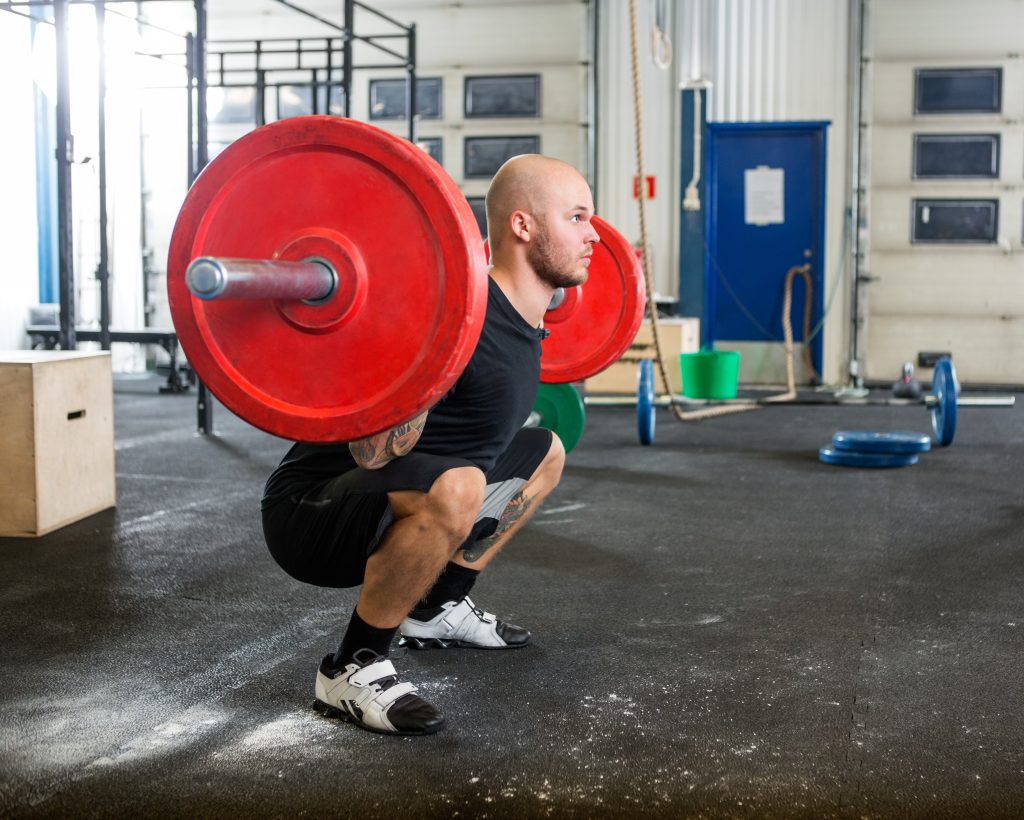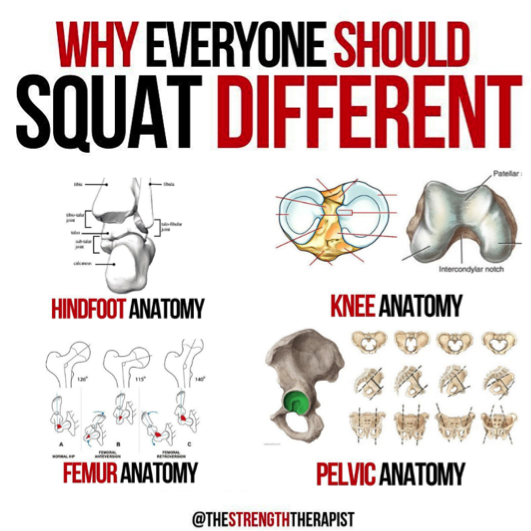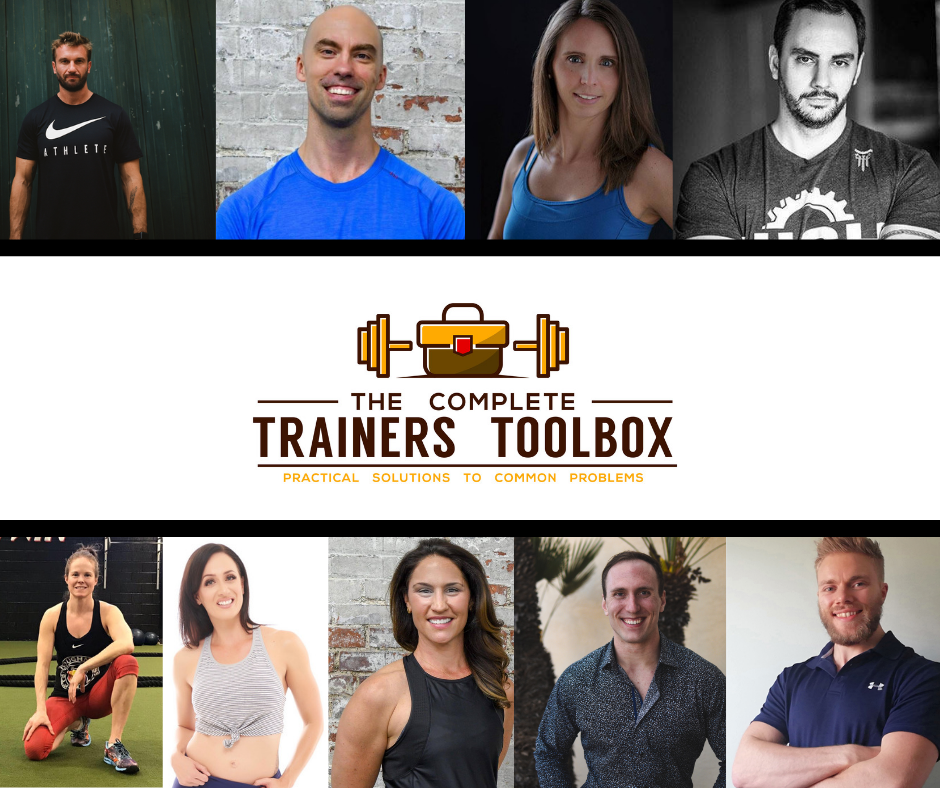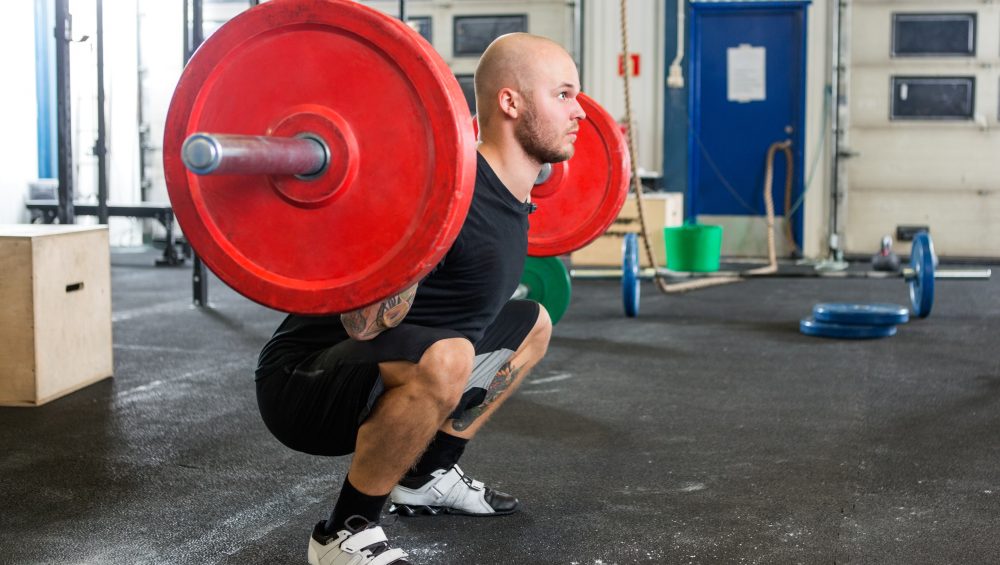I’ve often championed the notion that there’s “no such thing as textbook technique.”
How we’re taught to execute certain exercises in a textbook often won’t translate to the real world because, well, we don’t live in textbooks.
This is a theme that’s hit on several times in The Complete Trainers’ Toolbox. Sam Spinelli, one of the contributors, was kind enough to share a bit of an amuse bouche from his presentation “All Things Squats, Knees, and Hips” with everyone today.
To check out the full presentation, as well as contributions from eight other renowned industry leaders, go HERE for more information.

Individualizing Your Squat Stance
Humans are these incredibly awesome, adaptable, and diverse creatures.
Within our awesomeness, over time we have adapted to have a diverse set of unique features in our anatomy that provides for a wide range of movement from person to person. This is something that we did not readily acknowledge for a long time and tried to fit people into square holes.
The squat is a perfect example of this topic.
For such a long time it has been advocated to squat with your toes forward and perfectly hip width apart. The unfortunate thing is that this limits a significant majority of people from being able to squat comfortably – or to an appreciable depth.
While some people may be able to do so with practice and working on range of motion, for a vast majority it is just not realistic due to their bony anatomy.
As we examine the ankle, knee, and hip, we can see that there is significant variation within the bones forming them and the resulting joints.
For example, at the hip we have an acetabulum that can vary in depth of which will impact how much motion a set sized femoral head can have. This will impact the capacity of motion for hip range between individuals, leading to diverse squat stances already. When we begin to layer on the other ways our anatomy differs, it compounds and leads to a breadth of variations in how people may squat.

How Should I Squat Then?
There isn’t a set stance that will accommodate everyone – some people will do well with a hip width stance and slight toe out, others may do better with a narrower stance and feet directly forward. Finding what works best for you can be a challenge at first and require some experimentation.
To help expedite the process, try out these four methods:
1) Find Your Squat Stance – Standing
2) Find Your Squat Stance – Supported
3) Find Your Squat Stance – Seated
4) Find Your Squat Stance – Kneeling
The goal with each is to start with feet together and progress foot/knee width. You will find that one width generally feels better than the others, that’s the one to stick with for now. Then you can start playing around with foot/knee angle and continue experimenting.
This will get you a great head start on your squat stance and making it unique to you.
Two additional details – you may find your stance more comfortable with your feet not symmetrical and you may find that your stance changes with time. These things are normal for many people.
Did I Just Blow Your Mind?
This is just the tip of the iceberg in terms of stuff I cover in my presentation “All Things Squats, Knees, and Hips” in the Complete Trainers’ Toolbox, an online resource that became available this week that also features presentations from eight other industry professionals – including Tony Gentilcore, Dean Somerset, Dr. Lisa Lewis, Alex Kraszewski, Kellie Davis, Meghan Callaway, Dr. Sarah Duvall, and Luke Worthington..

It includes 17 total hours of content covering a wide range of topics every health/fitness professional is bound to relate with. It’s on sale this week at a significant discount, but only until Sunday, February 17th at midnight.
Go HERE for more information.




